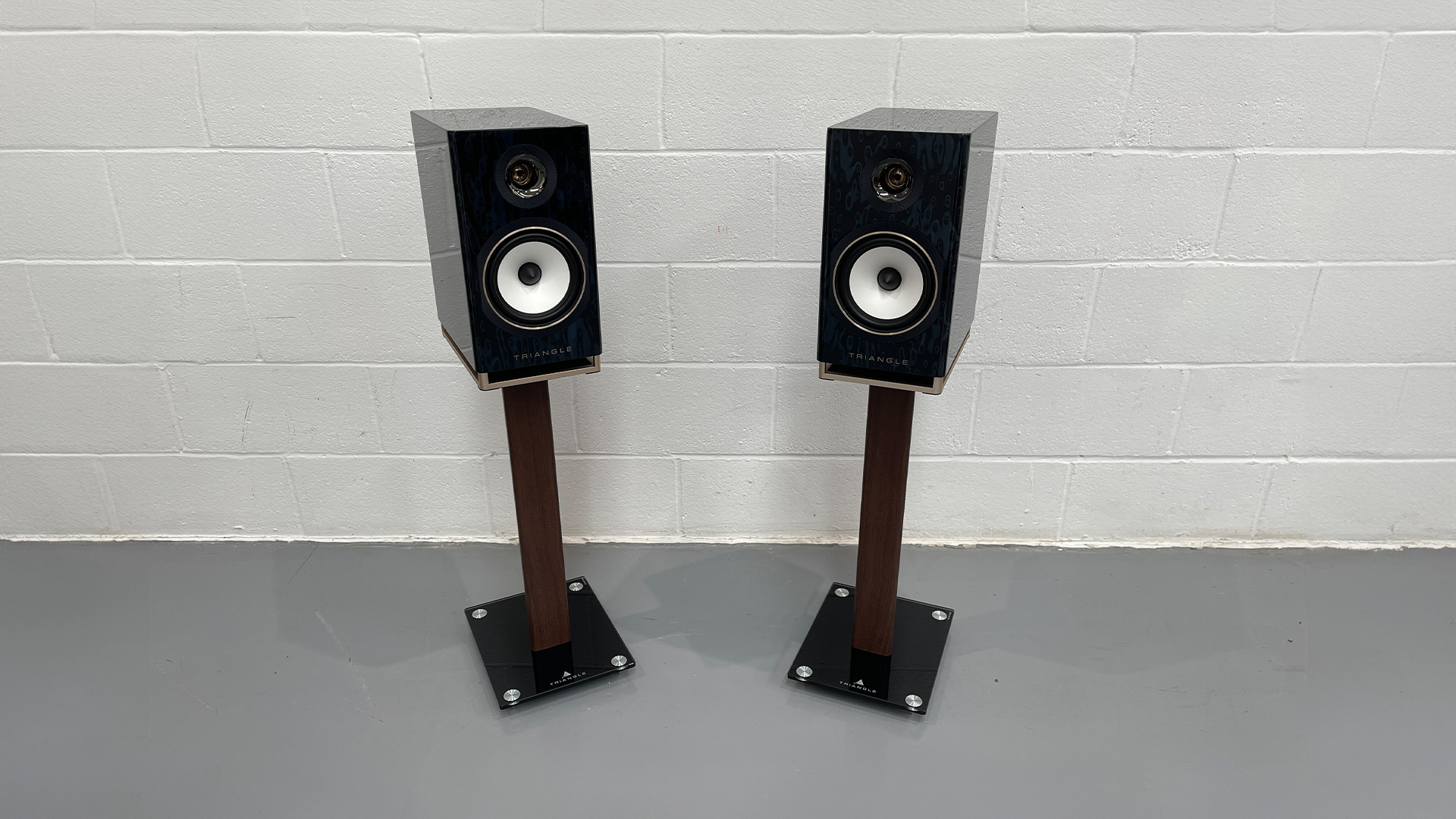What Hi-Fi? Verdict
Triangle's Capella has plenty of charm but needs a bit of refining before it can worry the class leaders
Pros
- +
A lively and dramatic sound
- +
Plenty of punch and drive
- +
Smart range of finishes
Cons
- -
No network streamer capability
- -
Sonic presentation lacks a bit of sophistication
- -
Quality control on the partnering stands could be better
Why you can trust What Hi-Fi?
We are big fans of wireless speaker systems like the Triangle Capella. If done well, they deliver the performance of good, carefully matched separates hi-fi but in a neater, more convenient package.
The lack of a physical connection to the pair of speakers gives a degree of flexibility that traditional wire-based alternatives can’t match. Of course, like its much admired KEF LS50 Wireless II rival, there is still the need for mains cables for each fully active speaker. So, like all such systems, the Triangle Capella is only wireless to a degree.
The big difference between this Triangle and its KEF rival is in the number of boxes they occupy. The Capella’s box count is three as it separates the connections and control from the pair of speakers. This control box, Triangle calls it a stereo hub, is about the size of a small paperback book and is responsible for all the input connectivity. It then sends the music signal wirelessly to each speaker.
Connectivity
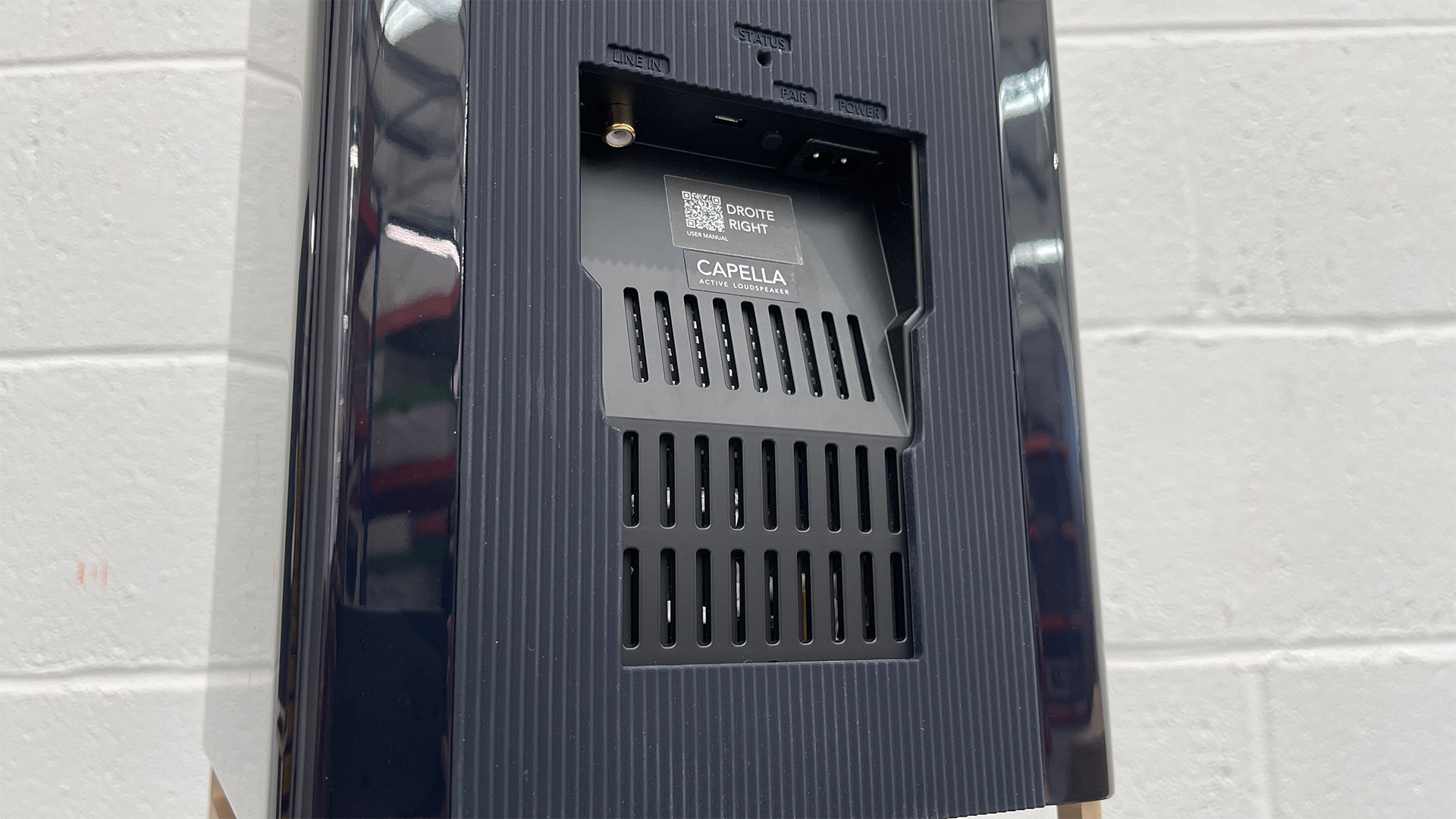
The stereo hub scores well in the input department. There is Bluetooth, a USB Type B, three opticals, an HDMI, a coaxial input and analogue inputs in the form of a stereo RCA and a 3.5mm aux. That 3.5mm doubles as an additional optical input. The Triangle’s digital inputs are compatible with up to 24-bit/192kHz PCM hi-res files, which should be fine for most people. DSD isn’t on the menu, though. Moving away from physical inputs there is Chromecast and AirPlay alongside Roon compatibility.
The logos of Apple Music, Qobuz and Deezer (among others) are shown on the Capella’s webpage, which suggests that these services are embedded. They are not. You will need a source to supply them, say a phone or computer coupled to a third-party UPnP app such as mConnect. Alternatively, something like a Cambridge Audio MXN10 standalone music streamer feeding one of the inputs (analogue or digital) would work too. Given that the Capella is a brand-new product, we expected full streaming capability built-in, much as it is in KEF's range of all-in-one wireless speaker systems.
Engineering & design
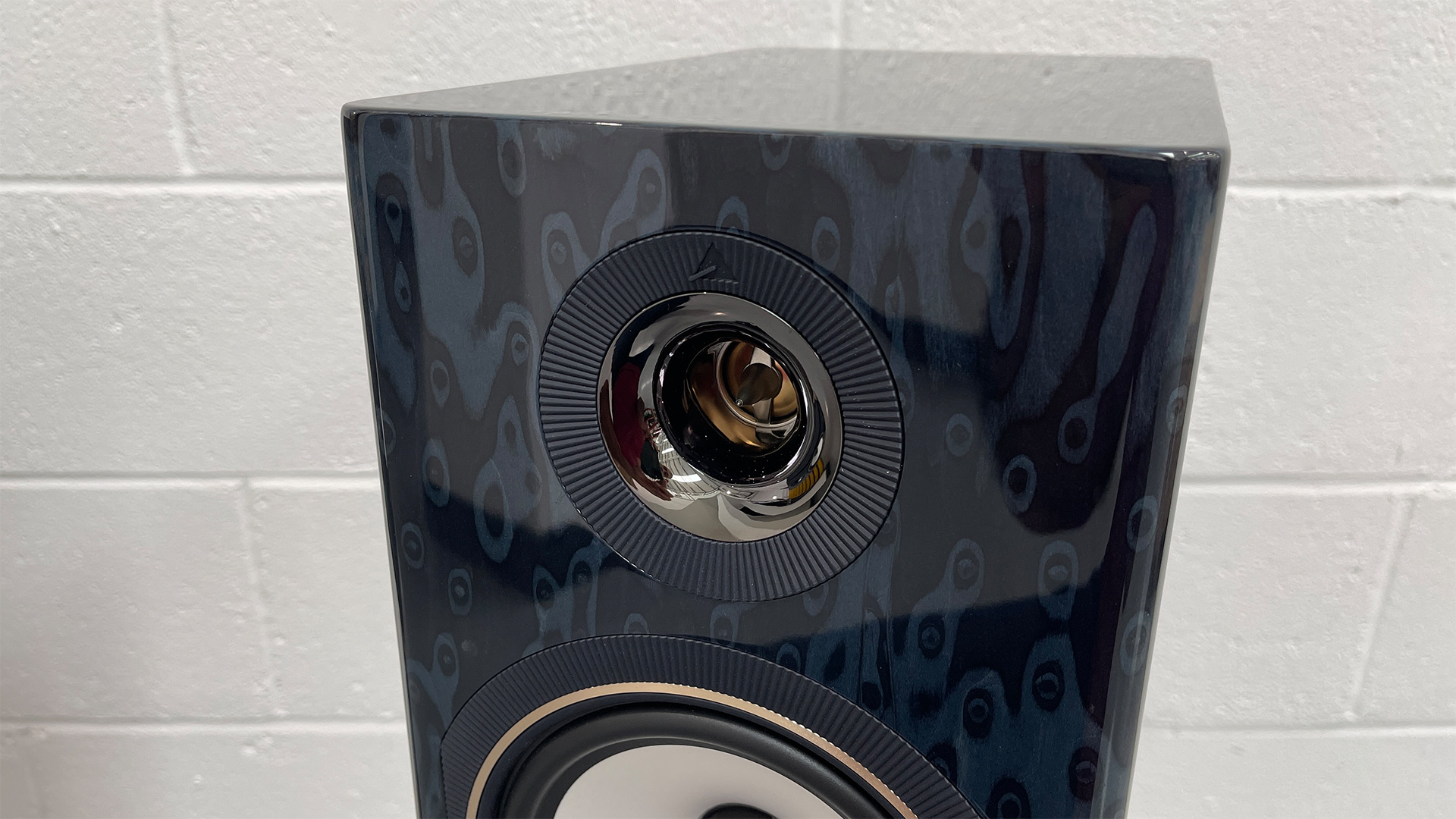
Things look more positive when we put our focus on the speakers. No surprise really, considering that’s where the brand’s expertise is. These are an active design with each box packing 50 watts of amplification and a dedicated DAC module for each of the two drive units. The tweeter is a horn-loaded 25mm magnesium alloy dome with a carefully shaped phase plug to control dispersion and resonances.
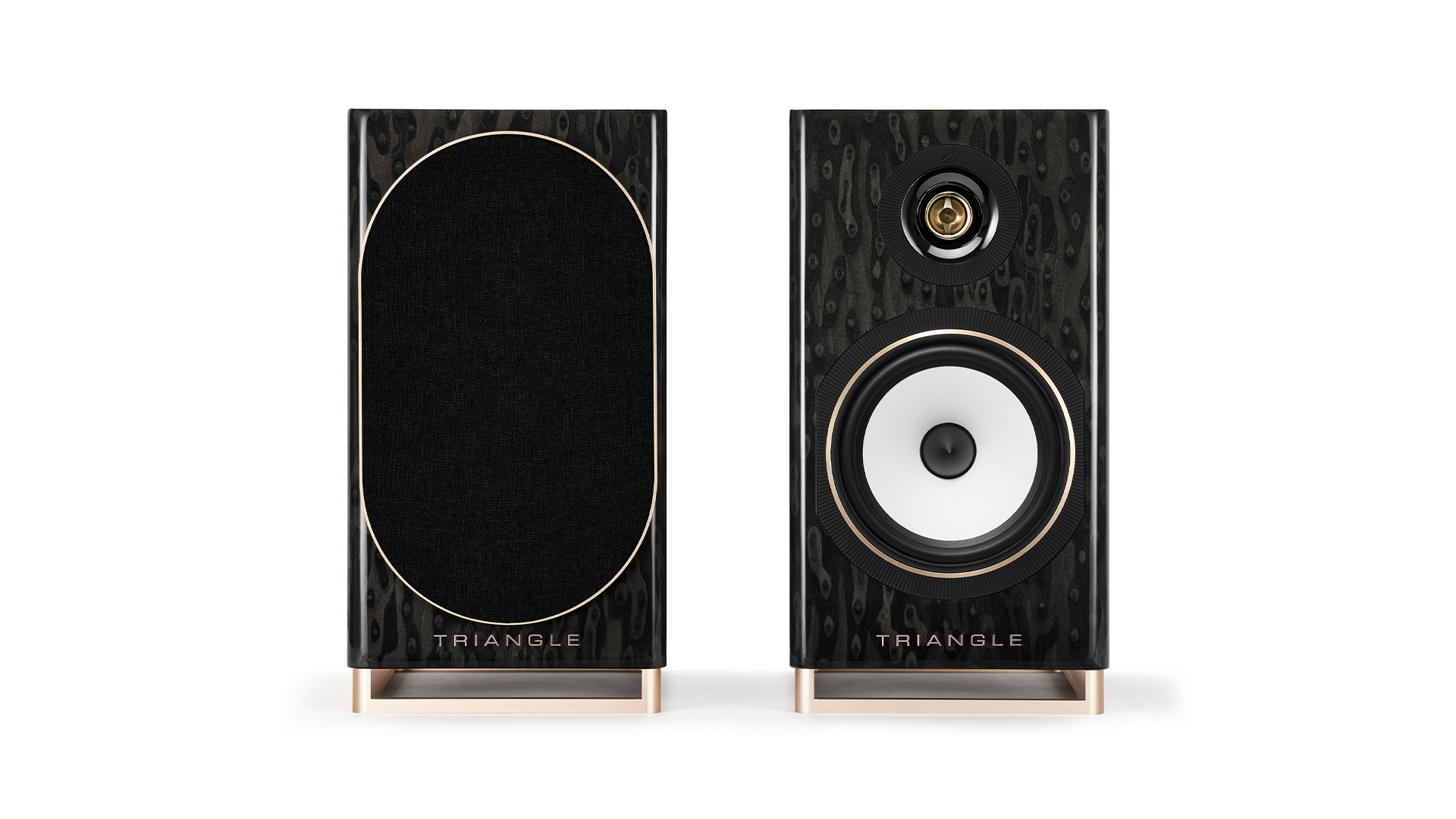
Network Wi-fi
Inputs Line level, 3.5mm, USB Type B, optical x 3, coaxial, HDMI, Bluetooth
Outputs WISA wireless technology
Headphone output? No
Max file resolution 24-bit/192kHz
Streaming features AirPlay, Chromecast built-in, Bluetooth
Power output 50 watts per channel
Dimensions (hwd) 38 x 20 x 31.5cm
Weight 8.5kg
Finishes x 4 (Black Star, Astral Blue, Space White, Brown Nebula)
A 16cm paper-cone driver looks after the frequencies from the midrange downwards. It is tuned by a downward-firing port that fires through the enclosure’s base and out of the gaps in the aluminium frame plinth. Spreading the port’s output in this way is claimed to make the speakers less sensitive to nearby walls, and so less fussy about positioning. Onboard DSP (Digital Signal Processing) optimises each drive unit’s behaviour, which in theory leads to clearer, cleaner and more balanced results.
Take a closer look at the Capella’s enclosure and you will find plenty of neat touches. Highlights include the internal cabinet bracing that doubles as extra support to the rear of the mid/bass driver, so improving rigidity, and the stylish way Triangle has minimised unwanted distortions through those smart trim rings and gently rounded cabinet edges.
Setting up
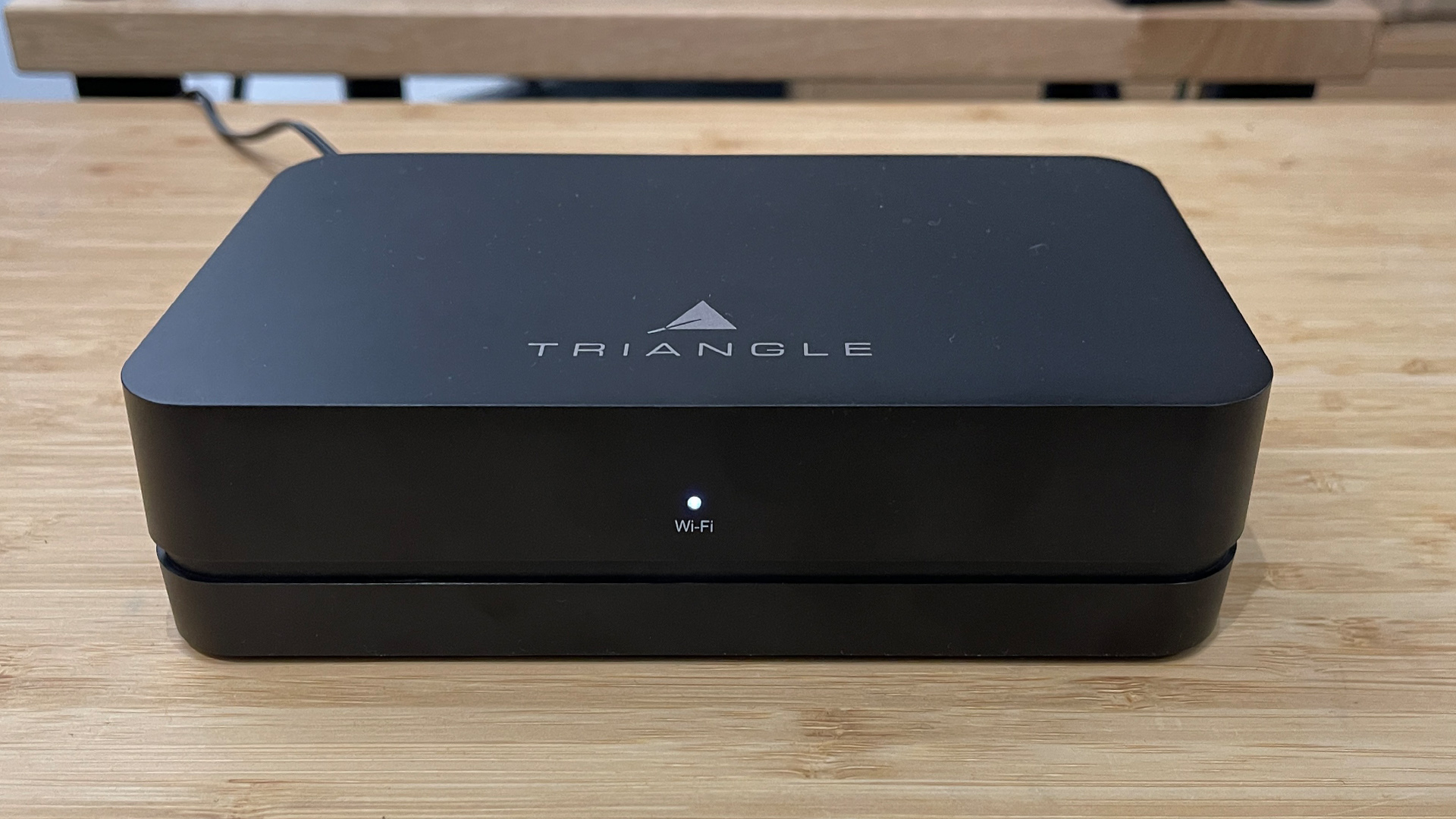
This Triangle Capella system is a breeze to set up. The stereo hub can only be connected wirelessly to your network. This is done through the Google Home app, and should only take a few minutes. The stereo hub’s front panel LED blinks until the network connection is made and then becomes solid.
Next press the ‘pairing’ button on the rear of each speaker and the stereo hub. The Capella uses WISA wireless technology for the connection between the two. WISA was developed specifically for audio and is compatible with signals up to 24-bit/96kHz resolution (latency is impressive at just 2.6ms between the channels). Here again, there are blinking LEDs that turn solid once the connection between the hub and each speaker is established. We have no issue with the procedure and are up and running in less than a minute. Note, there is no wired link between the two speakers, as there is on some rivals.
There is a label on the back of each speaker that designates whether it goes on the left or right. If for some reason you want to use the speakers the other way around, this can be switched from the dedicated Capella app.
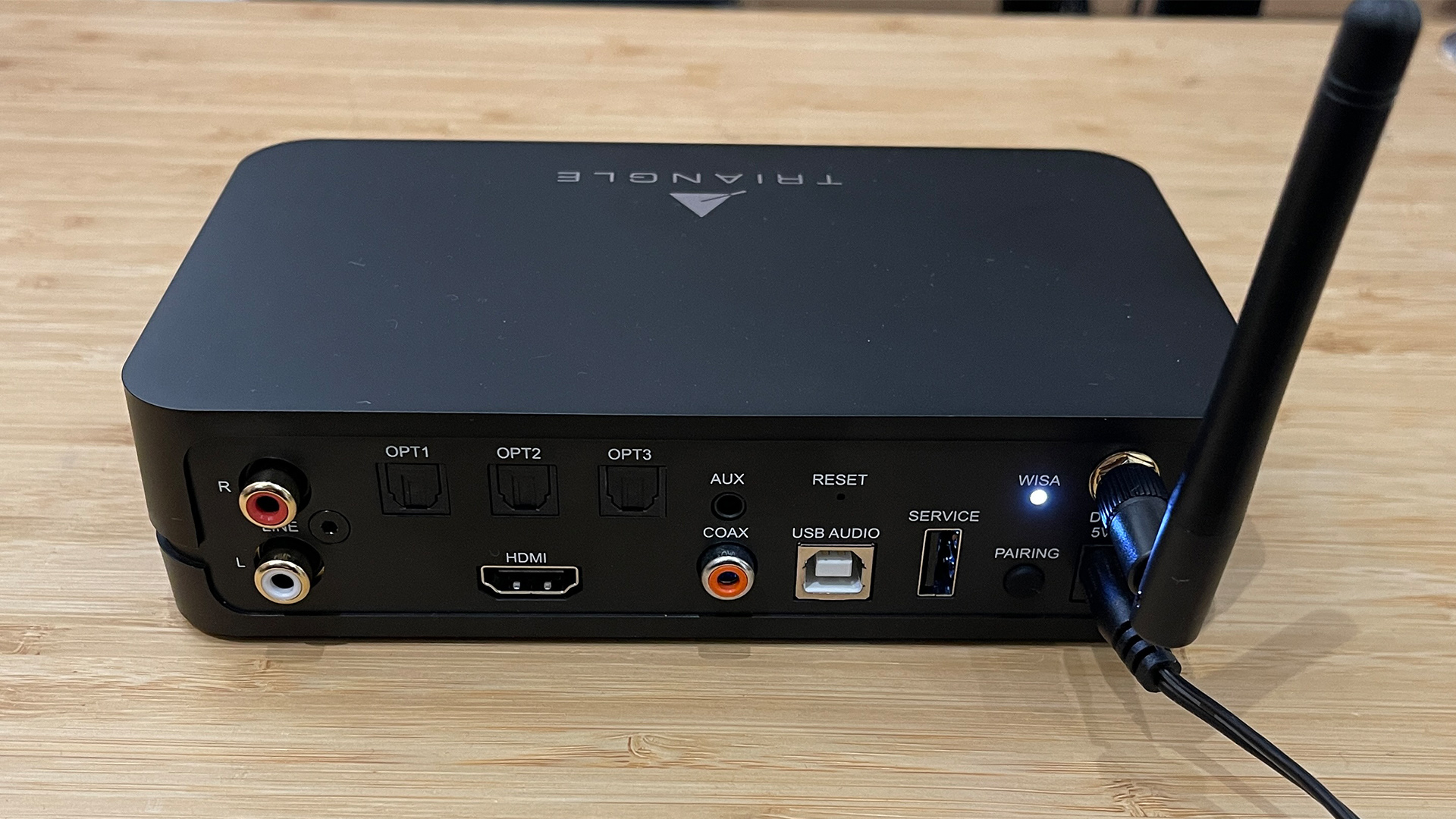
There are two ways to control the stereo hub; you can use the aforementioned app or a rather nice, well laid out metal remote that comes in the box. The app has some useful extra functionality, though. It can measure and then equalise the bass output of the speakers so that they work in a more balanced way in the room. If you have an iPhone, the app can use the smartphone’s internal microphone to take the measurements. Android users are not so lucky. There is too much variance between Android phones from different manufacturers, so a separate microphone has to be used. Triangle can supply one but it doesn’t come cheap at £115 in the UK. We expect the price to be similar in other countries.
Is the effort worthwhile? Well, it depends on how well-behaved your listening space is. Our acoustically treated room didn’t benefit much by using the equalisation but a more uneven room might. Regardless, for Apple users, it’s free and so worth a try.
Build
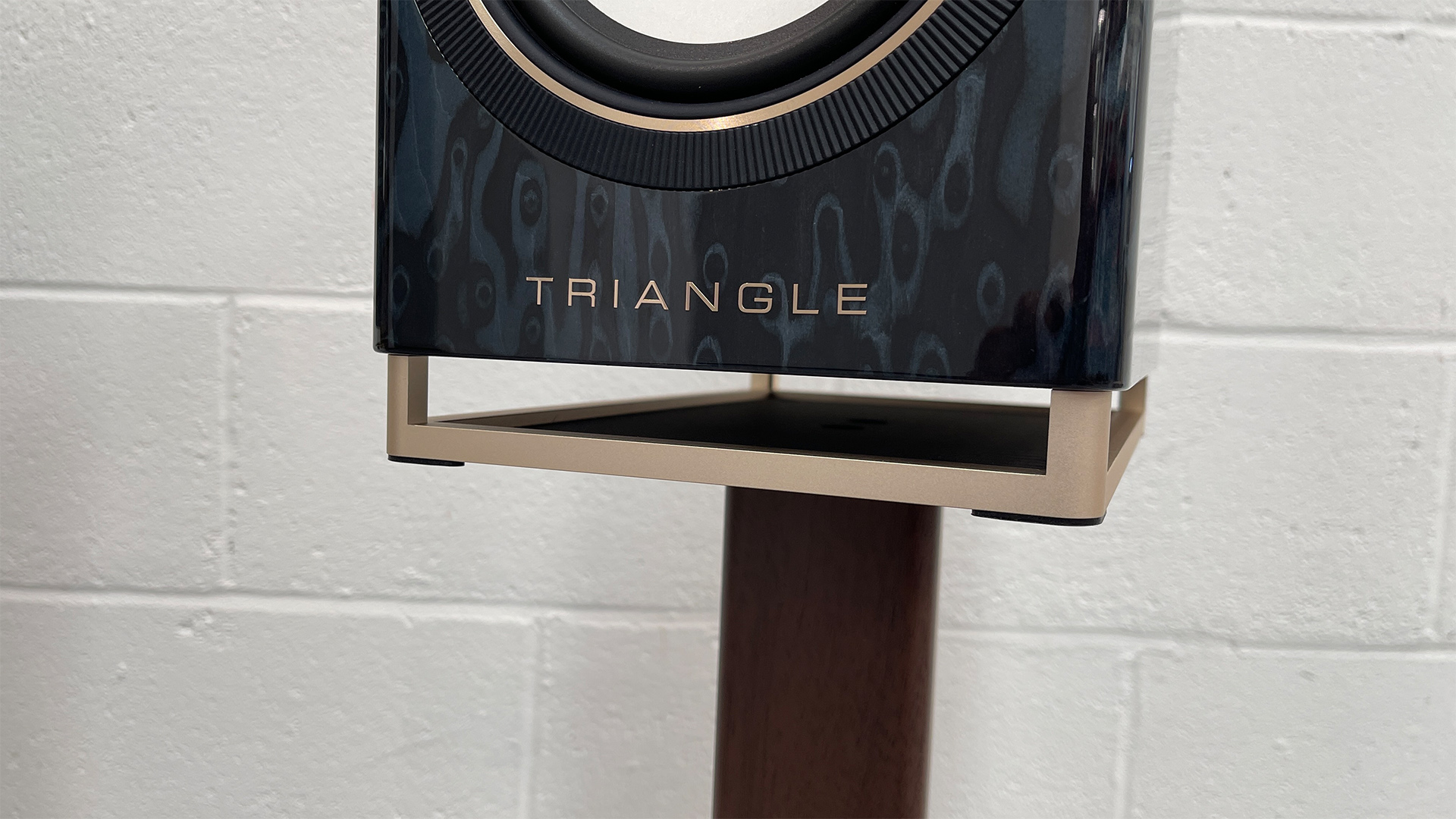
Build quality is good on the whole. The stereo hub is a rather anonymous small plastic box but is put together well enough. The speakers are far more impressive, feeling solidly assembled and luxuriously finished. We love the glossy blue (Astral Blue) of our review sample, but think the other three flamboyantly-named finish options – Black Star, Space White and Brown Nebula – look almost as nice.
The performance of any standmounter is heavily dependent on the quality of its support. Triangle makes stands that work well with the Capella sonically. Called the S05, they cost £279 / $340 / around AU$650 per pair. These stands have a top plate designed to fit perfectly into the aluminium plinths at the base of the speaker’s cabinet, making for a fuss-free installation.
However, that wasn’t quite true in our case where the top plate on one of the supplied stands was marginally oversized, preventing either of the speakers from sitting properly. A small issue and nothing a bit of filing wouldn’t fix, but Triangle’s quality control should be better.
We start with the speakers positioned on their stands around 70cm from the rear wall and well away from the sides. We angle them in slightly towards the listening position to focus the stereo imaging. From then on we don’t feel the need to tweak much as it all sounds balanced and relatively even.
The stereo hub is placed around 5m away from the furthest speaker and is positioned next to our sources, the Naim ND 555/555 PS DR music streamer and our usual MacBook Pro (loaded with Audirvana music-playing software and plenty of high-res music files).
Sound
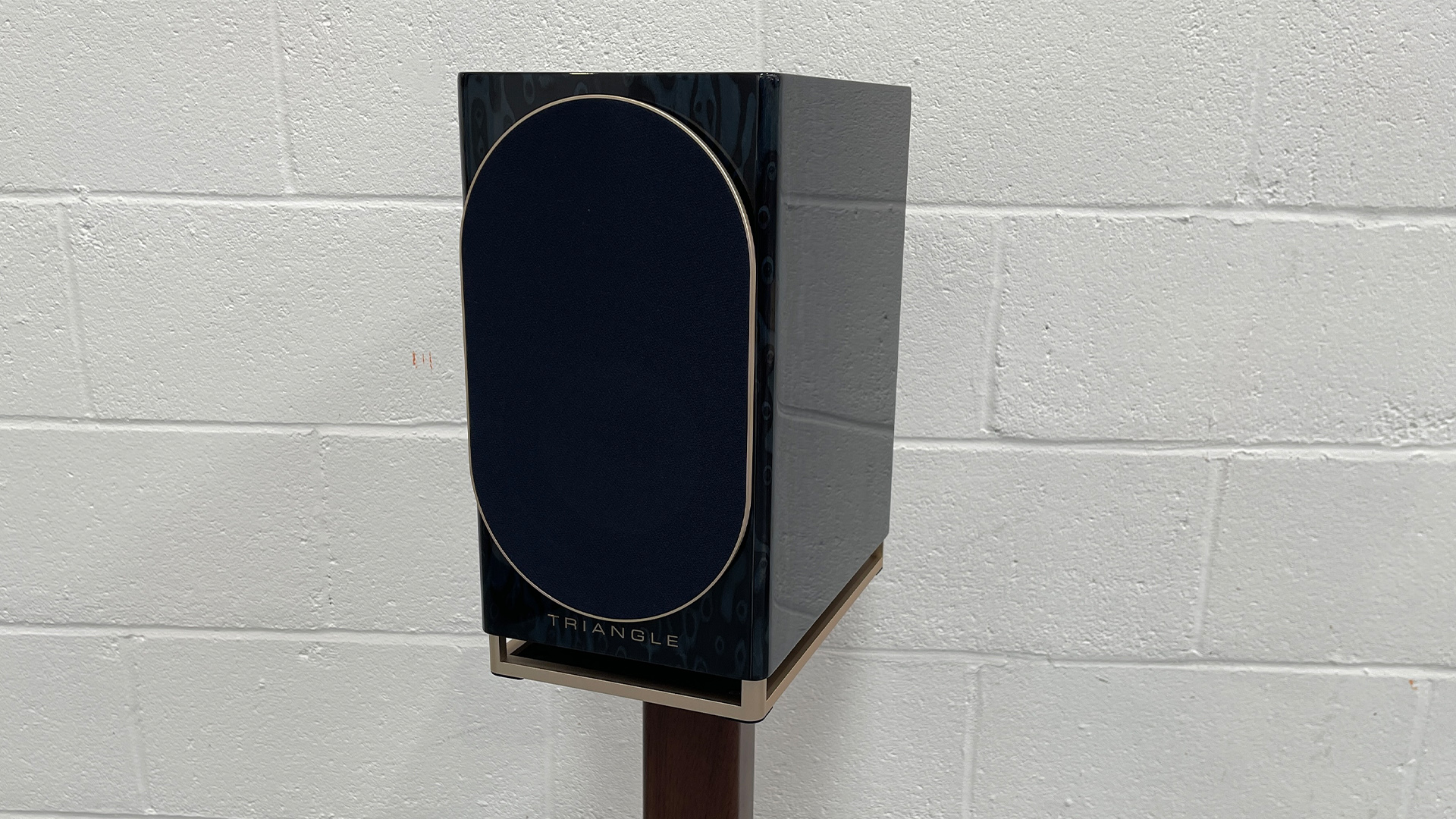
We tend to like the way Triangle’s speakers sound, so it is no surprise that we warm to the Capella. Regardless of inputs chosen, there is the familiar energetic delivery that trades a touch of top-end refinement for attack and speed.
Play something like Usher’s OMG and these Triangles sound right at home. They deliver the song’s pulsing beat with enthusiasm and drive. They are great at communicating the energy in the music, making it hard to sit still and just listen. At 38cm high these aren’t massive speakers but they still do a good job at punching out the lows on this song. Bass is taut and agile, though not the deepest we’ve heard. It remains tidy even when pushed, which is an admirable quality.
Vocals cut through with clarity and are delivered with pleasing articulation and subtlety. These speakers sound a little forward but don’t take things too far unless the volume level is pushed hard. Would we like a sweeter top end or more natural warmth through the midrange? Yes, we would, but there is also something hugely appealing about the Capella’s extrovert personality that we would be loathe to trade for more refinement.
Beethoven’s Moonlight Sonata shows that the Triangle understands subtlety. Here this package sounds bold but considered, delivering a reasonable dose of resolution and insight. Tonally, it isn’t the most neutral of performers but doesn’t err too far.
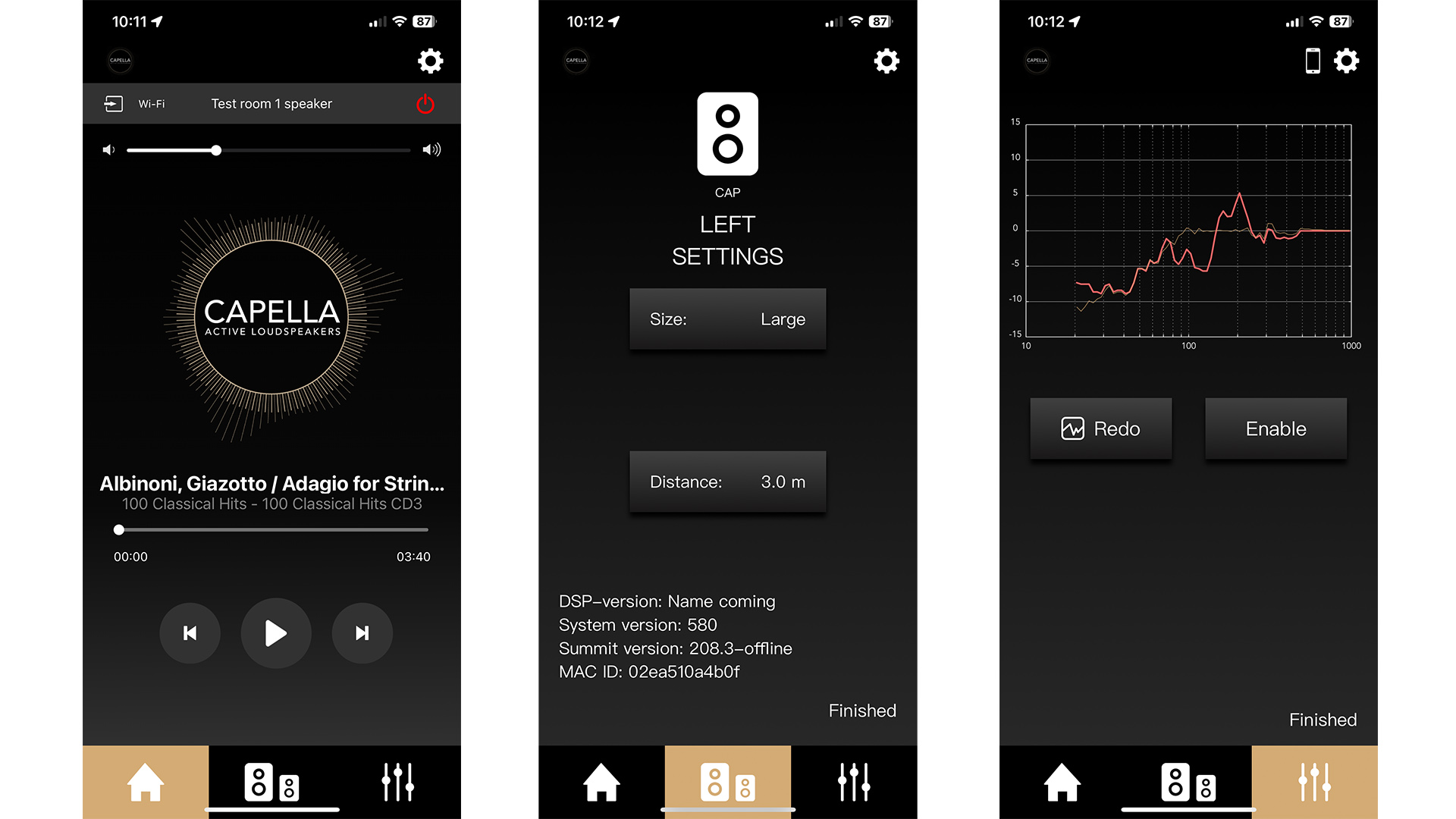
It captures the dynamic impulses of the piano superbly and renders the instrument’s harmonically rich tones with conviction. The exact timing of the notes and the slight differences in the force applied to the keys are clear, and the way it all fits together into a cohesive and musical performance is excellent.
Stereo imaging is stable and impressively precise. We have the speakers angled in so that they cross around a metre behind our heads and we get a broad and reasonably deep soundstage. Well-designed active speakers tend to sound stable and organised even when the music becomes demanding and that’s the case here. No similarly priced passive system we’ve heard can match the grip and sense of control of this package.
We work our way through the various inputs and the Capella’s sonic character stays consistent whether we use our reference Naim streamer in analogue or digital mode, or plug into the USB input and play our high-resolution files of Mahler’s Symphony No.4 or Michael Jackson’s Off The Wall.
Verdict
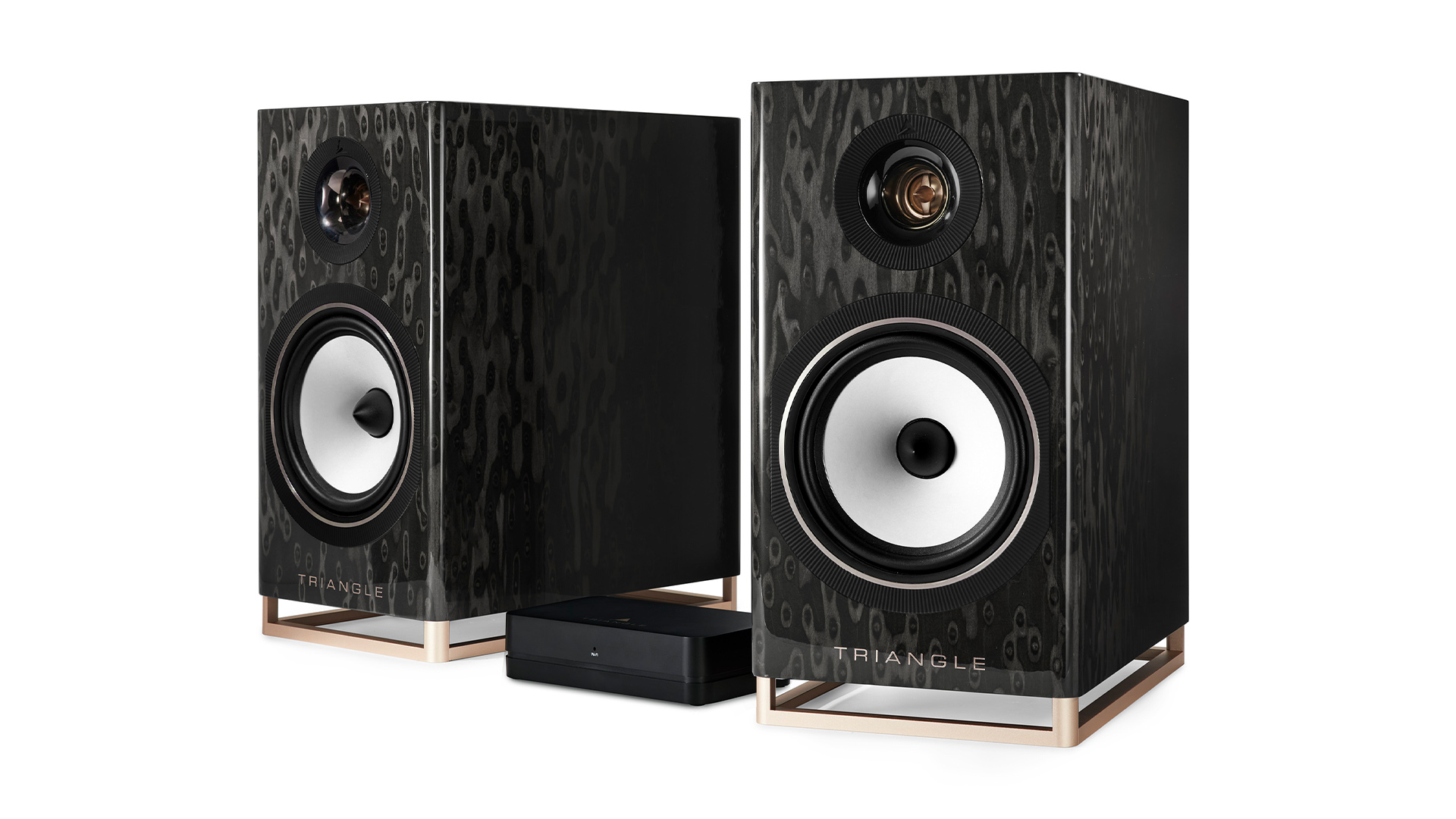
In our view, this Triangle Capella is almost a great product. It needs a touch more sweetness and natural warmth in the sound and another look at the feature set. Given that the stereo hub is an external box, that shouldn’t be impossible to do. Until then, the Capella active speakers remain a likeable but leftfield choice.
SCORES
- Sound 4
- Build 4
- Features 4
MORE:
Read our review of the KEF LS50 Wireless II
Also consider the JBL 4305P
Best active speakers: budget to high-end, handpicked by our experts
What Hi-Fi?, founded in 1976, is the world's leading independent guide to buying and owning hi-fi and home entertainment products. Our comprehensive tests help you buy the very best for your money, with our advice sections giving you step-by-step information on how to get even more from your music and movies. Everything is tested by our dedicated team of in-house reviewers in our custom-built test rooms in London, Reading and Bath. Our coveted five-star rating and Awards are recognised all over the world as the ultimate seal of approval, so you can buy with absolute confidence.
